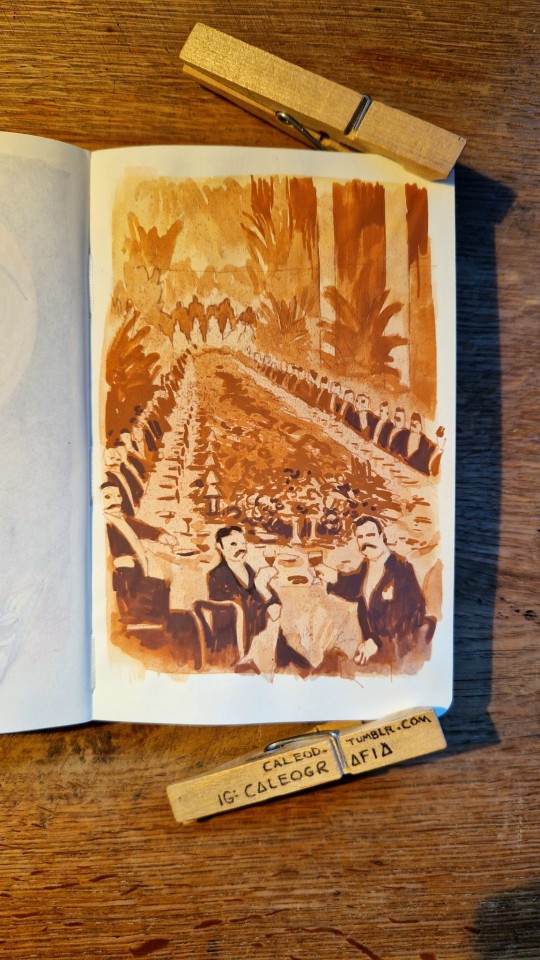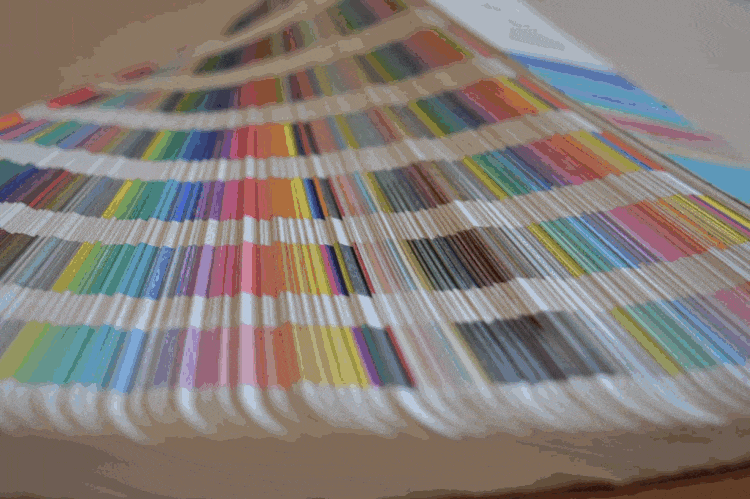
misscounterfactual
70 posts
Latest Posts by misscounterfactual

Japan's Akatsuki spacecraft, which has been orbiting Venus since 2015, has captured a remarkably clear image of the planet's atmosphere. This image was taken using its infrared camera, revealing detailed features of Venus' cloud structure and atmospheric dynamics

Arches National Park, Utah photo: Elliot McGucken

Moonbound: One Year Since Artemis I
On this day last year, the Artemis I rocket and spacecraft lit up the sky and embarked on the revolutionary mission to the Moon and back. The first integrated flight test of the rocket and spacecraft continued for 25.5 days, validating NASA’s deep exploration systems and setting the stage for humanity’s return to the lunar surface.

On Nov. 16, 2022, the Space Launch System (SLS) rocket met or exceeded all expectations during its debut launch on Artemis I. The twin solid rocket booster motors responsible for producing more than 7 million pounds of thrust at liftoff reached their performance target, helping SLS and the Orion spacecraft reach a speed of about 4,000 mph in just over two minutes before the boosters separated.

Quite a few payloads caught a ride aboard the Orion spacecraft on the Artemis I mission: In addition to a number of small scientific satellites called CubeSats, a manikin named Commander Moonikin Campos sat in the commander’s seat. A Snoopy doll served as a zero-gravity indicator — something that floats inside the spacecraft to demonstrate microgravity.

During the mission, Orion performed two lunar flybys, coming within 80 miles of the lunar surface. At its farthest distance during the mission, Orion traveled nearly 270,000 miles from our home planet, more than 1,000 times farther than where the International Space Station orbits Earth. This surpassed the record for distance traveled by a spacecraft designed to carry humans, previously set during Apollo 13.

The Orion spacecraft arrived back home to planet Earth on Dec. 11, 2022. During re-entry, Orion endured temperatures about half as hot as the surface of the Sun at about 5,000 degrees Fahrenheit. Within about 20 minutes, Orion slowed from nearly 25,000 mph to about 20 mph for its parachute-assisted splashdown.

Recovery teams successfully retrieved the spacecraft and delivered it back to NASA’s Kennedy Space Center for de-servicing operations, which included removing the payloads (like Snoopy and Commander Moonikin Campos) and analyzing the heat shield.

With the Artemis I mission under our belt, we look ahead to Artemis II — our first crewed mission to the Moon in over 50 years. Four astronauts will fly around the Moon inside Orion, practicing piloting the spacecraft and validating the spacecraft’s life support systems. The Artemis II crew includes: NASA astronauts Reid Wiseman, Victor Glover, and Christina Koch, and CSA astronaut Jeremy Hansen.
As we look ahead to Artemis II, we build upon the incredible success of the Artemis I mission and recognize the hard work and achievements of the entire Artemis team. Go Artemis!
Make sure to follow us on Tumblr for your regular dose of space!

Moonbound: One Year Since Artemis I
On this day last year, the Artemis I rocket and spacecraft lit up the sky and embarked on the revolutionary mission to the Moon and back. The first integrated flight test of the rocket and spacecraft continued for 25.5 days, validating NASA’s deep exploration systems and setting the stage for humanity’s return to the lunar surface.

On Nov. 16, 2022, the Space Launch System (SLS) rocket met or exceeded all expectations during its debut launch on Artemis I. The twin solid rocket booster motors responsible for producing more than 7 million pounds of thrust at liftoff reached their performance target, helping SLS and the Orion spacecraft reach a speed of about 4,000 mph in just over two minutes before the boosters separated.

Quite a few payloads caught a ride aboard the Orion spacecraft on the Artemis I mission: In addition to a number of small scientific satellites called CubeSats, a manikin named Commander Moonikin Campos sat in the commander’s seat. A Snoopy doll served as a zero-gravity indicator — something that floats inside the spacecraft to demonstrate microgravity.

During the mission, Orion performed two lunar flybys, coming within 80 miles of the lunar surface. At its farthest distance during the mission, Orion traveled nearly 270,000 miles from our home planet, more than 1,000 times farther than where the International Space Station orbits Earth. This surpassed the record for distance traveled by a spacecraft designed to carry humans, previously set during Apollo 13.

The Orion spacecraft arrived back home to planet Earth on Dec. 11, 2022. During re-entry, Orion endured temperatures about half as hot as the surface of the Sun at about 5,000 degrees Fahrenheit. Within about 20 minutes, Orion slowed from nearly 25,000 mph to about 20 mph for its parachute-assisted splashdown.

Recovery teams successfully retrieved the spacecraft and delivered it back to NASA’s Kennedy Space Center for de-servicing operations, which included removing the payloads (like Snoopy and Commander Moonikin Campos) and analyzing the heat shield.

With the Artemis I mission under our belt, we look ahead to Artemis II — our first crewed mission to the Moon in over 50 years. Four astronauts will fly around the Moon inside Orion, practicing piloting the spacecraft and validating the spacecraft’s life support systems. The Artemis II crew includes: NASA astronauts Reid Wiseman, Victor Glover, and Christina Koch, and CSA astronaut Jeremy Hansen.
As we look ahead to Artemis II, we build upon the incredible success of the Artemis I mission and recognize the hard work and achievements of the entire Artemis team. Go Artemis!
Make sure to follow us on Tumblr for your regular dose of space!

Guy Bluford Changed the Course of Space History
On Aug. 30, 1983, Guion Bluford, better known as Guy, became the first African American to fly to space. An accomplished jet pilot and aerospace engineer, Bluford became part of NASA’s 1978 astronaut class that included the first African American, the first Asian American, and the first women astronauts.
He and the other crew members of mission STS-8 were aboard the orbiter Challenger as it lifted off from Kennedy Space Center in Florida; it was the first nighttime launch and landing of the Space Shuttle program. While aboard, he and the other crew members deployed the Indian National Satellite (INSAT-1B), operated a Canadian-built robot arm, conducted experiments with live cell samples, and participated in studies measuring the effects of spaceflight on humans.
Guy Bluford chased his childhood dream of becoming an aerospace engineer, and in doing so, changed history and encouraged other Black astronauts to follow in his footsteps.
Make sure to follow us on Tumblr for your regular dose of space—and for milestones like this!

My largest piece yet! Turkey tail stumpwork by Humorii
Get Space-Crafty with Earth Science!
It’s time to get space-crafty! (Get it?) We’re getting ready to launch Landsat 9 into space this fall, and we want to know, how does Landsat inspire you?
For nearly 50 years, Landsat satellites have been collecting important data and taking beautiful images of Earth, as a partnership between NASA and the U.S. Geological Survey. Scientists and policy makers alike use this data to understand climate change, deforestation, the growth of cities, and so much more.

In celebration of the Landsat 9 launch in September, we are calling all crafters to create space-crafts inspired by your favorite Landsat image! From watercolor paintings to needlework to frosted cakes, let your creativity flow and show us how you see Landsat images.
Post a picture of your craft on Instagram, Twitter or Facebook with the hashtag #LandsatCraft. We will spotlight some on social media!
For a little inspiration, here are some #LandsatCraft examples from some of the people who work with Landsat:

“Looking through the Visible Earth Landsat gallery for inspiration, I saw the Landsat Image Mosaic of Antarctica (LIMA) and knew immediately what I had to do -- recreate it in a mosaic of my own. LIMA is a composite of more than 1,000 cloud-free Landsat 7 images of Antarctica, and when it was released in 2007 it was our first high resolution, true-color look at the icy continent.” – Kate Ramsayer, NASA Landsat Communications Coordinator

“I love embroidering satellite imagery and NASA data. For Landsat, I wanted something with lots of straight lines -- much easier to stitch! -- and crop fields like these fit the bill. It’s amazing how clearly we can see the influence of human activities in satellite imagery like this. It’s a constant reminder of the effect we have on our home planet.” – Katy Mersmann, Earth Science Social Media Lead

“We didn’t have the discipline or the organizational skills to do any of the really, really fancy images, like Lena Delta, so we chose Garden City, Kansas in 1972. We added a model of Landsat 1, too.” – Ryan Fitzgibbons, Earth Science Producer, and Charles Fitzgibbons, Age 8

"I was inspired by this Landsat image which demonstrates how we can use satellite imagery to remotely monitor cover crop performance, a sustainable farming practice that promotes soil health. Since I began working with NASA Harvest, NASA's Food Security and Agriculture Program, I've come to understand the critical importance of conservation agriculture and resilient farmlands in support of a food secure future for all, especially in the face of a changing climate." – Mary Mitkish, NASA Harvest Communications Lead

“I chose particular ingredients that represent the Landsat qualities that we celebrate:
The base spirit is gin because Landsat data is clean and precise. Vermouth represents our foreign collaborators. Using both lemon and lime juices signifies the diverse uses of the data. The ginger is for the land we study. The apple, well, because it’s American. The club soda makes it a long drink, for the long data record.” – Matthew Radcliff, NASA Landsat Producer

“Last year for the 50th Earth Day, I created this poster, inspired by our views of river deltas -- many captured by Landsat satellites -- which are particularly beautiful and evocative of water coursing through our land like a circulation system of nature. In 2000, Landsat 7 took one of my favorite images of the Lena Delta, which is the basis for this art.” – Jenny Mottar, Art Director for NASA Science
Are you feeling inspired to create yet? We’re so excited to see your #LandsatCraft projects! Follow NASA Earth on Twitter, Facebook, and Instagram to see if your art is shared!
Make sure to follow us on Tumblr for your regular dose of space!
NASA Inspires Your Crafty Creations for World Embroidery Day
It’s amazing what you can do with a little needle and thread! For #WorldEmbroideryDay, we asked what NASA imagery inspired you. You responded with a variety of embroidered creations, highlighting our different areas of study.
Here’s what we found:
Webb’s Carina Nebula

Wendy Edwards, a project coordinator with Earth Science Data Systems at NASA, created this embroidered piece inspired by Webb’s Carina Nebula image. Captured in infrared light, this image revealed for the first time previously invisible areas of star birth. Credit: Wendy Edwards, NASA. Pattern credit: Clare Bray, Climbing Goat Designs
Wendy Edwards, a project coordinator with Earth Science Data Systems at NASA, first learned cross stitch in middle school where she had to pick rotating electives and cross stitch/embroidery was one of the options. “When I look up to the stars and think about how incredibly, incomprehensibly big it is out there in the universe, I’m reminded that the universe isn’t ‘out there’ at all. We’re in it,” she said. Her latest piece focused on Webb’s image release of the Carina Nebula. The image showcased the telescope’s ability to peer through cosmic dust, shedding new light on how stars form.
Ocean Color Imagery: Exploring the North Caspian Sea

Danielle Currie of Satellite Stitches created a piece inspired by the Caspian Sea, taken by NASA’s ocean color satellites. Credit: Danielle Currie/Satellite Stitches
Danielle Currie is an environmental professional who resides in New Brunswick, Canada. She began embroidering at the beginning of the Covid-19 pandemic as a hobby to take her mind off the stress of the unknown. Danielle’s piece is titled “46.69, 50.43,” named after the coordinates of the area of the northern Caspian Sea captured by LandSat8 in 2019.

An image of the Caspian Sea captured by Landsat 8 in 2019. Credit: NASA
Two Hubble Images of the Pillars of Creation, 1995 and 2015

Melissa Cole of Star Stuff Stitching created an embroidery piece based on the Hubble image Pillars of Creation released in 1995. Credit: Melissa Cole, Star Stuff Stitching
Melissa Cole is an award-winning fiber artist from Philadelphia, PA, USA, inspired by the beauty and vastness of the universe. They began creating their own cross stitch patterns at 14, while living with their grandparents in rural Michigan, using colored pencils and graph paper. The Pillars of Creation (Eagle Nebula, M16), released by the Hubble Telescope in 1995 when Melissa was just 11 years old, captured the imagination of a young person in a rural, religious setting, with limited access to science education.

Lauren Wright Vartanian of the shop Neurons and Nebulas created this piece inspired by the Hubble Space Telescope’s 2015 25th anniversary re-capture of the Pillars of Creation. Credit: Lauren Wright Vartanian, Neurons and Nebulas
Lauren Wright Vartanian of Guelph, Ontario Canada considers herself a huge space nerd. She’s a multidisciplinary artist who took up hand sewing after the birth of her daughter. She’s currently working on the illustrations for a science themed alphabet book, made entirely out of textile art. It is being published by Firefly Books and comes out in the fall of 2024. Lauren said she was enamored by the original Pillars image released by Hubble in 1995. When Hubble released a higher resolution capture in 2015, she fell in love even further! This is her tribute to those well-known images.
James Webb Telescope Captures Pillars of Creation

Darci Lenker of Darci Lenker Art, created a rectangular version of Webb’s Pillars of Creation. Credit: Darci Lenker of Darci Lenker Art
Darci Lenker of Norman, Oklahoma started embroidery in college more than 20 years ago, but mainly only used it as an embellishment for her other fiber works. In 2015, she started a daily embroidery project where she planned to do one one-inch circle of embroidery every day for a year. She did a collection of miniature thread painted galaxies and nebulas for Science Museum Oklahoma in 2019. Lenker said she had previously embroidered the Hubble Telescope’s image of Pillars of Creation and was excited to see the new Webb Telescope image of the same thing. Lenker could not wait to stitch the same piece with bolder, more vivid colors.
Milky Way

Darci Lenker of Darci Lenker Art was inspired by NASA’s imaging of the Milky Way Galaxy. Credit: Darci Lenker
In this piece, Lenker became inspired by the Milky Way Galaxy, which is organized into spiral arms of giant stars that illuminate interstellar gas and dust. The Sun is in a finger called the Orion Spur.
The Cosmic Microwave Background

This image shows an embroidery design based on the cosmic microwave background, created by Jessica Campbell, who runs Astrostitches. Inside a tan wooden frame, a colorful oval is stitched onto a black background in shades of blue, green, yellow, and a little bit of red. Credit: Jessica Campbell/ Astrostitches
Jessica Campbell obtained her PhD in astrophysics from the University of Toronto studying interstellar dust and magnetic fields in the Milky Way Galaxy. Jessica promptly taught herself how to cross-stitch in March 2020 and has since enjoyed turning astronomical observations into realistic cross-stitches. Her piece was inspired by the cosmic microwave background, which displays the oldest light in the universe.

The full-sky image of the temperature fluctuations (shown as color differences) in the cosmic microwave background, made from nine years of WMAP observations. These are the seeds of galaxies, from a time when the universe was under 400,000 years old. Credit: NASA/WMAP Science Team
GISSTEMP: NASA’s Yearly Temperature Release

Katy Mersmann, a NASA social media specialist, created this embroidered piece based on NASA’s Goddard Institute for Space Studies (GISS) global annual temperature record. Earth’s average surface temperature in 2020 tied with 2016 as the warmest year on record. Credit: Katy Mersmann, NASA
Katy Mersmann is a social media specialist at NASA’s Goddard Space Flight Center in Greenbelt, Md. She started embroidering when she was in graduate school. Many of her pieces are inspired by her work as a communicator. With climate data in particular, she was inspired by the researchers who are doing the work to understand how the planet is changing. The GISTEMP piece above is based on a data visualization of 2020 global temperature anomalies, still currently tied for the warmest year on record.
In addition to embroidery, NASA continues to inspire art in all forms. Check out other creative takes with Landsat Crafts and the James Webb Space telescope public art gallery.
Make sure to follow us on Tumblr for your regular dose of space!







BMW iX Flow featuring E Ink !
With the BMW iX Flow featuring E Ink being presented on the occasion of CES 2022, the Munich-based premium car manufacturer is offering the prospect of a future technology that uses digitisation to adapt the exterior of a vehicle to different situations and individual wishes. The surface of the BMW iX Flow featuring E Ink can vary its shade at the driver’s prompting.
I’m still crying over the beauty that was the Sony Reader. Cell service, stylus, dictionary, touchscreen, audio and came in a robust case.
Amazon killed E-ink innovation. But it's back.
Amazon killed E-ink innovation. But it’s back.
View On WordPress
Brings back childhood memories of studying NASA concept art for my Space Lego projects
Behold—the space station of the future! (…from 1973)

This artist’s concept gives a cutaway view of the Skylab orbital workshop, which launched 50 years ago on May 14, 1973. Established in 1970, the Skylab Program's goals were to enrich our scientific knowledge of Earth, the sun, the stars, and cosmic space; to study the effects of weightlessness on living organisms; to study the effects of the processing and manufacturing of materials in the absence of gravity; and to conduct Earth-resource observations.
Three crews visited Skylab and carried out 270 scientific and technical investigations in the fields of physics, astronomy, and biological sciences. They also proved that humans could live and work in outer space for extended periods of time, laying the groundwork for the International Space Station.
Make sure to follow us on Tumblr for your regular dose of space!

Rockets, Racecars, and the Physics of Going Fast

When our Space Launch System (SLS) rocket launches the Artemis missions to the Moon, it can have a top speed of more than six miles per second. Rockets and racecars are designed with speed in mind to accomplish their missions—but there’s more to speed than just engines and fuel. Learn more about the physics of going fast:

Take a look under the hood, so to speak, of our SLS mega Moon rocket and you’ll find that each of its four RS-25 engines have high-pressure turbopumps that generate a combined 94,400 horsepower per engine. All that horsepower creates more than 2 million pounds of thrust to help launch our four Artemis astronauts inside the Orion spacecraft beyond Earth orbit and onward to the Moon. How does that horsepower compare to a racecar? World champion racecars can generate more than 1,000 horsepower as they speed around the track.

As these vehicles start their engines, a series of special machinery is moving and grooving inside those engines. Turbo engines in racecars work at up to 15,000 rotations per minute, aka rpm. The turbopumps on the RS-25 engines rotate at a staggering 37,000 rpm. SLS’s RS-25 engines will burn for approximately eight minutes, while racecar engines generally run for 1 ½-3 hours during a race.

To use that power effectively, both rockets and racecars are designed to slice through the air as efficiently as possible.
While rockets want to eliminate as much drag as possible, racecars carefully use the air they’re slicing through to keep them pinned to the track and speed around corners faster. This phenomenon is called downforce.

Steering these mighty machines is a delicate process that involves complex mechanics.
Most racecars use a rack-and-pinion system to convert the turn of a steering wheel to precisely point the front tires in the right direction. While SLS doesn’t have a steering wheel, its powerful engines and solid rocket boosters do have nozzles that gimbal, or move, to better direct the force of the thrust during launch and flight.

Racecar drivers and astronauts are laser focused, keeping their sights set on the destination. Pit crews and launch control teams both analyze data from numerous sensors and computers to guide them to the finish line. In the case of our mighty SLS rocket, its 212-foot-tall core stage has nearly 1,000 sensors to help fly, track, and guide the rocket on the right trajectory and at the right speed. That same data is relayed to launch teams on the ground in real time. Like SLS, world-champion racecars use hundreds of sensors to help drivers and teams manage the race and perform at peak levels.

Knowing how to best use, manage, and battle the physics of going fast, is critical in that final lap. You can learn more about rockets and racecars here.
Make sure to follow us on Tumblr for your regular dose of space!
Celebrate Earth Day with NASA

"We came all this way to explore the Moon, and the most important thing is that we discovered the Earth." - Apollo 8 astronaut Bill Anders
On Dec. 24, 1968, Anders snapped this iconic photo of "Earthrise" during the historic Apollo 8 mission. As he and fellow astronauts Frank Borman and Jim Lovell became the first humans to orbit the Moon, they witnessed Earth rising over the Moon's horizon. The image helped spark the first #EarthDay on April 22, 1970.
Anders sat down with Dr. Kate Calvin, our chief scientist and senior climate advisor, to chat about the photo, and NASA’s role in studying our home.
Make sure to follow us on Tumblr for your regular dose of space!





Delicate patterns evocative of ancient palaces for this outfit, pairing a kimono with decorated kaiawase (Heian period shell-matching game) over waves ground, and a beautiful obi depicting tagasode (kimono discarded on ikou/rack)

Hello! i saw your kimono drawing guide, and i have some questions. I saw this art and was wondering about a few things: what is the tied knot& tassel things on the sleeves for? and, what hairstyle is the lady wearing? If you know, please tell me! If you don't know, could it be possible to direct me to someone that might? Thank you for taking the time to answer, if you're able! Have a lovely night/day!
Hi and thank you for your question :) The ukiyoe you are sharing is by Utagawa Kunisada and titled Genji rokujo no hana (源氏六條の花), or "Cherry Blossoms at Genji's Rokujô Mansion". It is part of a three prints set:

It depicts an imaginary scenery from The tale of Genji, and the young lady playing with her pet cat is the princess Onna San no Miya.
Characters are not shown wearing period accurate clothes (from Heian era), but luscious Edo period attires. Because of her rank, the young princess is wearing what Edo princesses would, especially the trademark hairstyle named fukiya 吹輪.
You'll find below a translation from a costume photobook I did a while ago. Note the big bridge style front hairpin, and the drum like one in the back. Princesses from the buke (samurai class) would also have dangling locks called aikyôge (I also found the term okurege), but I am not sure kuge princesses (noble class) wore them too.

There is a whole dispute about this hairstyle, as we are not actually sure it was worn as such by actual princesses. This style may have in fact started as a somehow cliché bunraku/kabuki costume used to depict princesses (think a bit like Western Cinderella-types princess gowns). Nowadays, it is found only as a theater style, or worn by Maiko during Setsubun season.
For comparison, here is character Shizuka Gozen from kabuki play Yoshitsune Senbon Zakura:

As for the dangling cords, I covered those in a past ask about kamuro that you can find here (part 1 / part 2). TL:DR: I am still not sure what is the exact name for those decorations (kazari himo? sode no himo?).
But their use is pretty much linked to 3 things:
1) luck + protection (knots have auspicous meanings),
2) reinforcing weak points of garnment (here: sleeves wrist opening)
3) cuteness impact, as much like furisode (long sleeves kimono) those dangling ribbons were mostly seen on girls/young unmarried ladies by the Edo period
All the design elements chosen by Utagawa Kunisada for his Onna San no Miya stress own young and carefree she is still (which considering her narrative arc is in fact a bit sad... like all Genji Monogatari stories). BUT: bonus points for pet cat!
Hope that helps :)
i think this mp4 has been missing from the sitecosystem too long

3D printing pen / 3Doodler
had a dream where my mom tried to give our Venus fly trap a spoonful of milk and it immediately started hacking and coughing like an adult human man

20-12-22
12 Great Gifts from Astronomy
This is a season where our thoughts turn to others and many exchange gifts with friends and family. For astronomers, our universe is the gift that keeps on giving. We’ve learned so much about it, but every question we answer leads to new things we want to know. Stars, galaxies, planets, black holes … there are endless wonders to study.
In honor of this time of year, let’s count our way through some of our favorite gifts from astronomy.
Our first astronomical gift is … one planet Earth
So far, there is only one planet that we’ve found that has everything needed to support life as we know it — Earth. Even though we’ve discovered over 5,200 planets outside our solar system, none are quite like home. But the search continues with the help of missions like our Transiting Exoplanet Survey Satellite (TESS). And even you (yes, you!) can help in the search with citizen science programs like Planet Hunters TESS and Backyard Worlds.

Our second astronomical gift is … two giant bubbles
Astronomers found out that our Milky Way galaxy is blowing bubbles — two of them! Each bubble is about 25,000 light-years tall and glows in gamma rays. Scientists using data from our Fermi Gamma-ray Space Telescope discovered these structures in 2010, and we're still learning about them.

Our third astronomical gift is … three types of black holes
Most black holes fit into two size categories: stellar-mass goes up to hundreds of Suns, and supermassive starts at hundreds of thousands of Suns. But what happens between those two? Where are the midsize ones? With the help of NASA’s Hubble Space Telescope, scientists found the best evidence yet for that third, in between type that we call intermediate-mass black holes. The masses of these black holes should range from around a hundred to hundreds of thousands of times the Sun’s mass. The hunt continues for these elusive black holes.

Our fourth and fifth astronomical gifts are … Stephan’s Quintet
When looking at this stunning image of Stephan’s Quintet from our James Webb Space Telescope, it seems like five galaxies are hanging around one another — but did you know that one of the galaxies is much closer than the others? Four of the five galaxies are hanging out together about 290 million light-years away, but the fifth and leftmost galaxy in the image below — called NGC 7320 — is actually closer to Earth at just 40 million light-years away.

Our sixth astronomical gift is … an eclipsing six-star system
Astronomers found a six-star system where all of the stars undergo eclipses, using data from our TESS mission, a supercomputer, and automated eclipse-identifying software. The system, called TYC 7037-89-1, is located 1,900 light-years away in the constellation Eridanus and the first of its kind we’ve found.

Our seventh astronomical gift is … seven Earth-sized planets
In 2017, our now-retired Spitzer Space Telescope helped find seven Earth-size planets around TRAPPIST-1. It remains the largest batch of Earth-size worlds found around a single star and the most rocky planets found in one star’s habitable zone, the range of distances where conditions may be just right to allow the presence of liquid water on a planet’s surface.
Further research has helped us understand the planets’ densities, atmospheres, and more!

Our eighth astronomical gift is … an (almost) eight-foot mirror
The primary mirror on our Nancy Grace Roman Space Telescope is approximately eight feet in diameter, similar to our Hubble Space Telescope. But Roman can survey large regions of the sky over 1,000 times faster, allowing it to hunt for thousands of exoplanets and measure light from a billion galaxies.

Our ninth astronomical gift is … a kilonova nine days later
In 2017, the National Science Foundation (NSF)’s Laser Interferometer Gravitational-Wave Observatory (LIGO) and European Gravitational Observatory’s Virgo detected gravitational waves from a pair of colliding neutron stars. Less than two seconds later, our telescopes detected a burst of gamma rays from the same event. It was the first time light and gravitational waves were seen from the same cosmic source. But then nine days later, astronomers saw X-ray light produced in jets in the collision’s aftermath. This later emission is called a kilonova, and it helped astronomers understand what the slower-moving material is made of.

Our tenth astronomical gift is … NuSTAR’s ten-meter-long mast
Our NuSTAR X-ray observatory is the first space telescope able to focus on high-energy X-rays. Its ten-meter-long (33 foot) mast, which deployed shortly after launch, puts NuSTAR’s detectors at the perfect distance from its reflective optics to focus X-rays. NuSTAR recently celebrated 10 years since its launch in 2012.

Our eleventh astronomical gift is … eleven days of observations
How long did our Hubble Space Telescope stare at a seemingly empty patch of sky to discover it was full of thousands of faint galaxies? More than 11 days of observations came together to capture this amazing image — that’s about 1 million seconds spread over 400 orbits around Earth!

Our twelfth astronomical gift is … a twelve-kilometer radius
Pulsars are collapsed stellar cores that pack the mass of our Sun into a whirling city-sized ball, compressing matter to its limits. Our NICER telescope aboard the International Space Station helped us precisely measure one called J0030 and found it had a radius of about twelve kilometers — roughly the size of Chicago! This discovery has expanded our understanding of pulsars with the most precise and reliable size measurements of any to date.

Stay tuned to NASA Universe on Twitter and Facebook to keep up with what’s going on in the cosmos every day. You can learn more about the universe here.
Make sure to follow us on Tumblr for your regular dose of space!
Adobe steals your color

When a company breaks a product you rely on — wrecking decades of work — it’s natural to feel fury. Companies know this, so they try to deflect your rage by blaming their suppliers. Sometimes, it’s suppliers who are at fault — but other times, there is plenty of blame to go around.
For example, when Apple deleted all the working VPNs from its Chinese App Store and backdoored its Chinese cloud servers, it blamed the Chinese government. But the Chinese state knew that Apple had locked its devices so that its Chinese customers couldn’t install third-party apps.
That meant that an order to remove working VPNs and apps that used offshore clouds from the App Store would lock Apple customers into Chinese state surveillance. The order to block privacy tools was a completely foreseeable consequence of Apple’s locked-down “ecosystem.”
https://locusmag.com/2021/01/cory-doctorow-neofeudalism-and-the-digital-manor/
In 2013, Adobe started to shift its customers to the cloud, replacing apps like Photoshop and Illustrator with “Software as a Service” (“SaaS”) versions that you would have to pay rent on, every month, month after month, forever. It’s not hard to understand why this was an attractive proposition for Adobe!
Adobe, of course, billed its SaaS system as good for its customers — rather than paying thousands of dollars for its software up front, you could pay a few dollars (anywhere from $10-$50) every month instead. Eventually, of course, you’d end up paying more, assuming these were your professional tools, which you expected to use for the rest of your life.
For people who work in prepress, a key part of their Adobe tools is integration with Pantone. Pantone is a system for specifying color-matching. A Pantone number corresponds to a specific tint that’s either made by mixing the four standard print colors (cyan, magenta, yellow and black, AKA “CMYK”), or by applying a “spot” color. Spot colors are added to print jobs after the normal CMYK passes — if you want a stripe of metallic gold or a blob of hot pink, you specify its Pantone number and the printer loads up a separate ink and runs your media through its printer one more time.
Pantone wants to license this system out, so it needs some kind of copyrightable element. There aren’t many of these in the Pantone system! There’s the trademark, but that’s a very thin barrier. Trademark has a broad “nominative use” exception: it’s not a trademark violation to say, “Pantone 448C corresponds to the hex color #4a412a.”
Perhaps there’s a copyright? Well yes, there’s a “thin” database copyright on the Pantone values and their ink equivalents. Anyone selling a RIP or printer that translates Pantone numbers to inks almost certainly has to license Pantone’s copyright there. And if you wanted to make an image-editing program that conveyed the ink data to a printer, you’d best take a license.
All of this is suddenly relevant because it appears that things have broken down between Adobe and Pantone. Rather than getting Pantone support bundled in with your Adobe apps, you must now pay $21/month for a Pantone plugin.
https://twitter.com/funwithstuff/status/1585850262656143360
Remember, Adobe’s apps have moved to the cloud. Any change that Adobe makes in its central servers ripples out to every Adobe user in the world instantaneously. If Adobe makes a change to its apps that you don’t like, you can’t just run an older version. SaaS vendors like to boast that with cloud-based apps, “you’re always running the latest version!”
The next version of Adobe’s apps will require you to pay that $21/month Pantone fee, or any Pantone-defined colors in your images will render as black. That’s true whether you created the file last week or 20 years ago.
Doubtless, Adobe will blame Pantone for this, and it’s true that Pantone’s greed is the root cause here. But this is an utterly foreseeable result of Adobe’s SaaS strategy. If Adobe’s customers were all running their apps locally, a move like this on Pantone’s part would simply cause every affected customer to run older versions of Adobe apps. Adobe wouldn’t be able to sell any upgrades and Pantone wouldn’t get any license fees.
But because Adobe is in the cloud, its customers don’t have that option. Adobe doesn’t have to have its users’ backs because if it caves to Pantone, users will still have to rent its software every month, and because that is the “latest version,” those users will also have to rent the Pantone plugin every month — forever.
What’s more, while there may not be any licensable copyright in a file that simply says, “Color this pixel with Pantone 448C” (provided the program doesn’t contain ink-mix descriptions), Adobe’s other products — its RIPs and Postscript engines — do depend on licensable elements of Pantone, so the company can’t afford to tell Pantone to go pound sand.
Like the Chinese government coming after Apple because they knew that any change that Apple made to its service would override its customers’ choices, Pantone came after Adobe because they knew that SaaS insulated Adobe from its customers’ wrath.
Adobe customers can’t even switch to its main rival, Figma. Adobe’s just dropped $20b to acquire that company and ensure that its customers can’t punish it for selling out by changing vendors.
Pantone started out as a tech company: a way to reliably specify ink mixes in different prepress houses and print shops. Today, it’s an “IP” company, where “IP” means “any law or policy that allows me to control the conduct of my customers, critics or competitors.”
https://locusmag.com/2020/09/cory-doctorow-ip/
That’s likewise true of Adobe. The move to SaaS is best understood as a means to exert control over Adobe’s customers and competitors. Combined with anti-competitive killer acquisitions that gobble up any rival that manages to escape this control, and you have a hostage situation that other IP companies like Pantone can exploit.
A decade or so ago, Ginger Coons created Open Colour Standard, an attempt to make an interoperable alternative to Pantone. Alas, it seems dormant today:
http://adaptstudio.ca/ocs/
Owning colors is a terrible idea and technically, it’s not possible to do so. Neither UPS Brown nor John Deere Green are “owned” in any meaningful sense, but the companies certainly want you to believe that they are. Inspired by them and Pantone, people with IP brain-worms keep trying to turn colors into property:
https://onezero.medium.com/crypto-copyright-bdf24f48bf99
The law is clear that colors aren’t property, but by combining SaaS, copyright, trademark, and other tech and policies, it is becoming increasingly likely that some corporation will stealing the colors out from under our very eyes.
[Image ID: A Pantone swatchbook; it slowly fades to grey, then to black.]






um … compilation
The practicality and ingenuity shown with these radiators is inspiring. I love the multiple use of the heat source.
Could this also be used to dry linens or is that too much humidity?






Radiators with food-warming compartments
True story. My author/journalist/landlady took a trip to the States, met up with my college student friend to be shown the US college student life, and then pushed her into putting her credit card details into her Uber app.
Then over the course of the remainder of her trip she used my friend’s card to pay for her Uber trips until the money ran out.
The kicker to this story is that she wants 10k in upfront heating gas costs for the year because of “the war”.
Why are rich people so bad at money?
5 Ways Studying Water Will Help Us Better Understand Earth
Studying our home planet is just as powerful as exploring what’s beyond it.
Surface Water and Ocean Topography (SWOT) is a joint mission developed by NASA and the French space agency Centre National d’Études Spatiales (CNES), with contributions from the Canadian Space Agency and the UK Space Agency. It will track water on more than 90% of Earth’s surface and help communities, scientists, and researchers better understand this finite and vital resource. And it’s launching this month!
So how will SWOT help us better understand Earth? Here are 5 ways.

SWOT will address some of the most pressing climate change questions of our time.
An important part of predicting our future climate is determining at what point Earth’s ocean water slows down its absorption of the excess heat in the atmosphere and starts releasing that heat back into the air, where it could accelerate global warming. SWOT will provide crucial information about this global heat exchange between the ocean and the atmosphere, enabling researchers to test and improve future climate forecasts.
The satellite will also offer insights to improve computer models for sea level rise projections and coastal flood forecasting.
Data from SWOT will additionally help scientists, engineers, water managers, and others better monitor drought conditions in lakes and reservoirs and improve flood forecasts for rivers.

SWOT is the first satellite mission that will observe nearly all water on the planet’s surface.
SWOT will measure the height of water in Earth’s lakes, rivers, reservoirs, and the ocean, giving scientists the ability to track the movement of water around the world.
SWOT’s eye in the sky will provide a truly global view of the water on more than 90% of Earth’s surface, enriching humankind’s understanding of how the ocean reacts to and influences climate change along with what potential hazards – including floods – lie ahead in different regions of the world.

SWOT will see Earth’s water in higher definition than ever before.
Because everything is better in HD 😉, SWOT will view Earth’s ocean and freshwater bodies with unprecedented clarity compared to other satellites, much like a high-definition television delivers a picture far more detailed than older models. This means that SWOT will be able to “see” ocean features – like fronts and eddies – that are too small for current space-based instruments to detect. Those measurements will help improve researchers’ understanding of the ocean’s role in climate change.
Not only will the satellite show where – and how fast – sea level is rising, it will also reveal how coastlines around the world are changing. It will provide similar high-definition clarity for Earth’s lakes, rivers, and reservoirs, many of which remain a mystery to researchers, who aren’t able to outfit every water body with monitoring instruments.

SWOT data will be used to help make decisions about our daily lives and livelihoods.
As climate change accelerates the water cycle, more communities around the world will be inundated with water while others won’t have enough. SWOT data will be used to monitor drought conditions and improve flood forecasts, providing essential information to water management agencies, disaster preparedness agencies, universities, civil engineers, and others who need to track water in their local areas. SWOT data also will help industries, like shipping, by providing measurements of water levels along rivers, as well as ocean conditions, including tides, currents, and storm surges.

Finally … SWOT will pave the way for future Earth missions.
With its innovative technology and commitment to engaging a diverse community of people who plan to use data from the mission, SWOT is blazing a trail for future Earth-observing missions. SWOT’s data and the tools to support researchers in analyzing the information will be free and accessible. This will help to foster research and applications activities by a wide range of users, including scientists, resource managers, and others who in the past may not have had the opportunity to access this kind of information. Lessons learned from SWOT will lead to new questions and improvements for future missions, including our upcoming Earth System Observatory, a constellation of missions focused on studying key aspects of our home planet.

Keep track of the mission here. And make sure to follow us on Tumblr for your regular dose of space!
Say Hello to NGC 6441

Location: In the Scorpius constellation
Distance from Earth: About 44,000 light-years
Object type: Globular star cluster
Discovered by: James Dunlop in 1826
Each tiny point of light in this image is its own star - and there are more than a million of them! This stunning image captured by the Hubble Telescope depicts NGC 6441, a globular cluster that weighs about 1.6 million times the mass of our Sun. Globular clusters like NGC 6441 are groups of old stars held together by their mutual gravitational attraction, appearing nearly spherical in shape due to the density of stars that comprises them. This particular cluster is one of the most massive and luminous in our Milky Way Galaxy. It is also home to a planetary nebula and four pulsars (rotating neutron stars that emit beams of radiation at steady intervals, detected when the beams are aimed at Earth).
Read more information about NGC 6441 here.
Right now, the Hubble Space Telescope is delving into its #StarrySights campaign! Find more star cluster content and spectacular new images by following along on Hubble’s Twitter, Facebook, and Instagram.
Make sure to follow us on Tumblr for your regular dose of space!


